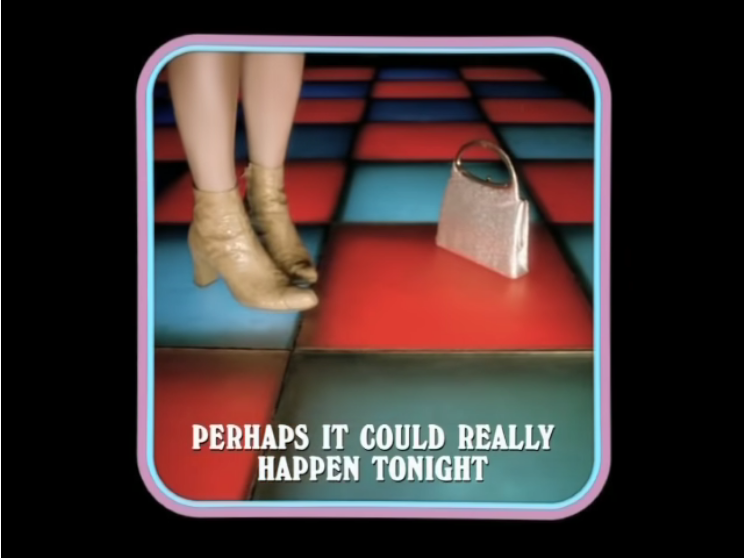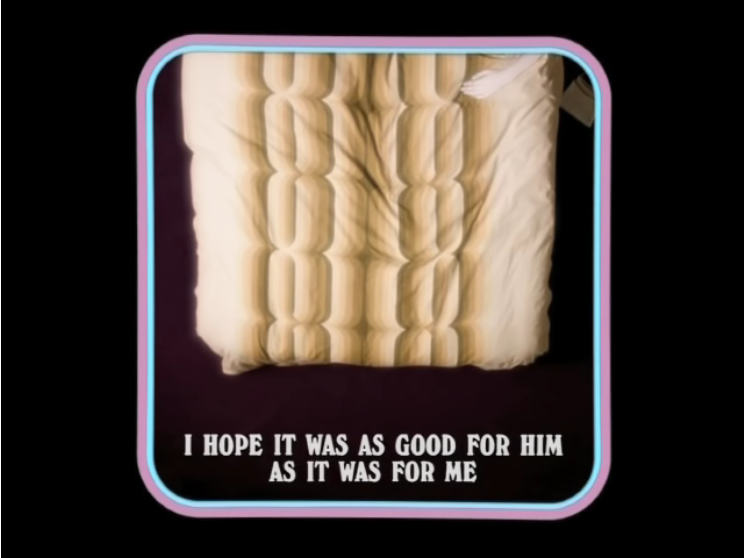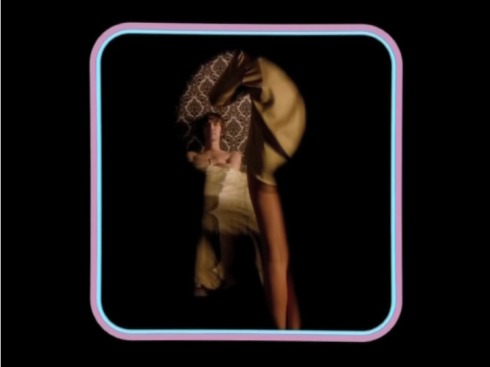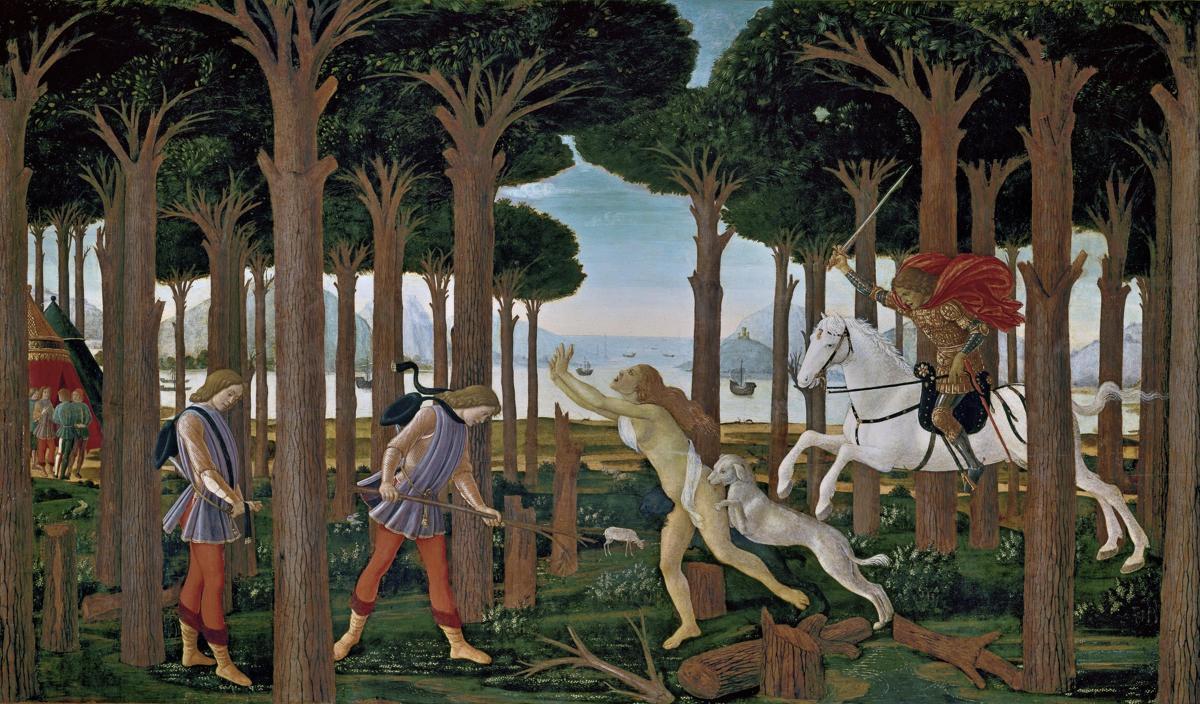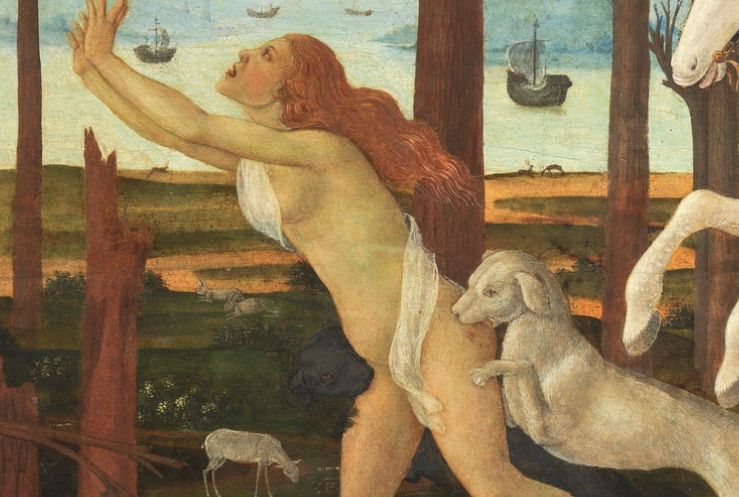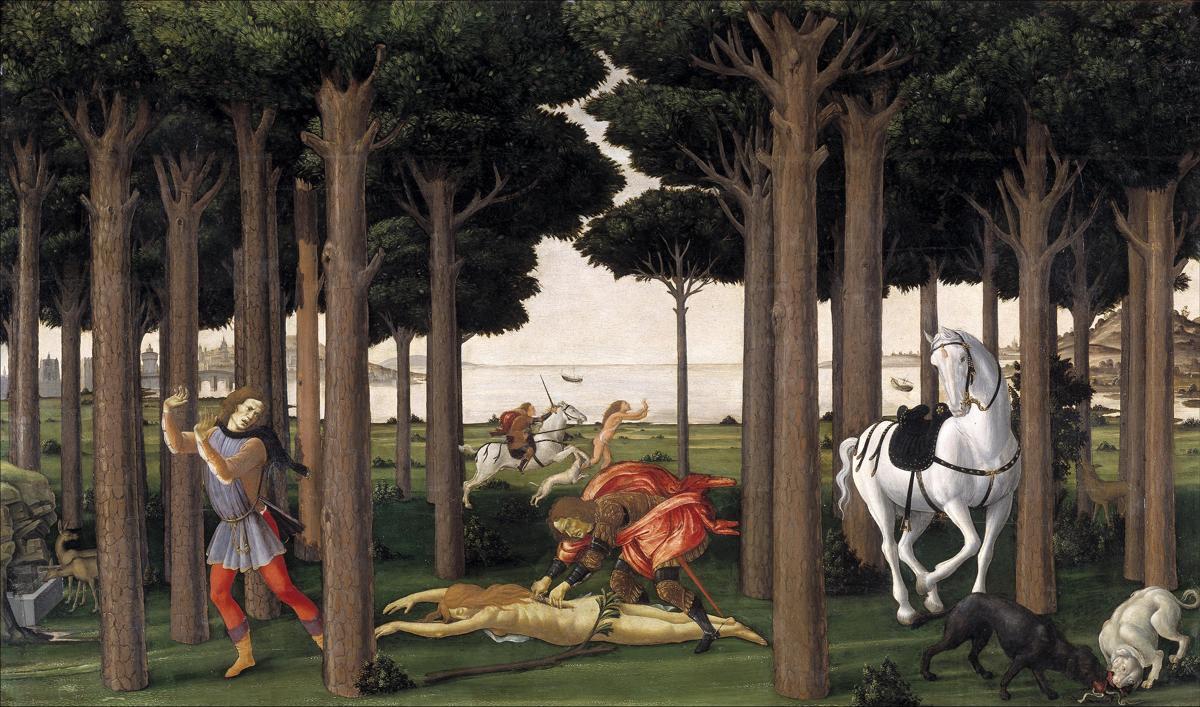English painter John William Waterhouse was born in Rome in 1849; the same year the Pre-Raphaelite Brotherhood was formed in London. So, he wasn’t a member of the original Brotherhood, but his style and subject matter show that he embraced their aesthetic and continued the themes ranging from Shakespeare to Arthurian romances and mythology. He created a world of beauty and dreams that served as a refuge from grey and harsh reality for Victorians who were such escapists. Waterhouse portrayed the legend of the Lady of Shalott three times, in 1888, 1894 and 1916. Although the version from 1888 is by far the most popular, today we’ll take a look at the other two.
 John William Waterhouse, The Lady of Shalott Looking at Lancelot, 1894
John William Waterhouse, The Lady of Shalott Looking at Lancelot, 1894
“Who is that?”, Elaine stood up quickly, abandoning her tapestry, and in two-three steps approached the window of her lonely tower, with long curious, thirsty glances soaking up the beauty of the sights never before seen directly. Her long velvety hair spilt in dozens of cascades on her back, like a shimmering murmuring waterfall, reaching her waist. Yearning, fear and gentle admiration coloured her pale, beautiful face. Never before have the beams of sun, nor the moon, drops of rain or spring zephyrs caressed it. Her white gown, its flimsy sleeves and dozens of silk petticoats, shines like the moon on the night sky against the darkness of her tower, but its gentle rustling is too far from the ears of a lovely knight who happened to be passing by. “Who is he?”, wonders Elaine, stepping forward with one leg, but leaning on the chair with her hand as soon as the words of the ancient curse run through her mind. Golden thread that wrapped itself like a snake around her dress seems to warn her too about the consequences of her actions… but Elaine can’t resist! She resisted gazing for so long, relying on shadows, pale reflections of the world in her mirror, but today the temptation to look was too irresistible, for she saw a knight riding from Camelot, passing her tower by, his armour glowing in the sun, his coal-black curls flowing underneath his helmet; it was none other than Sir Lancelot.
“She left the web, she left the loom
She made three paces thro’ the room
She saw the water-flower bloom,
She saw the helmet and the plume,
She look’d down to Camelot.
Out flew the web and floated wide;
The mirror crack’d from side to side;
‘The curse is come upon me,’ cried
The Lady of Shalott.” (
*)
***
One sight was enough for this beautiful, naive, vulnerable lily-maiden to fall in love. Her heart ached not solely for the handsome and distant knight who innocently passed by her tower, unaware of her sad destiny, but for the music, lights and liveliness of Camelot, for people and their chatter, but her curse was never to feel the world, but to gaze at it passively in the mirror, a stale reflection was to replace the vibrancy of reality. The moment she left her tapestry, drawn to the window like a moth to the light, she felt her soul overwhelmed with love and the same moment her world fell apart for the curse has come upon her, and she cried.
As I’ve already said in the introduction, Waterhouse painted three different portrayals of the sad life of the Lady of Shalott, but thematically and chronologically they go into different directions; the first painting, from 1888, shows Elaine floating to her death while the last one, from 1916, shows her contemplating over her life of isolation. I am certain that, had he painted three more, they would all be as imaginative, dreamy and original. This is the first, and the most famous 1888 version of which I wrote about
here. It is a true gem indeed and a symbol of Pre-Raphaelite artistic vision:

So, in the last painting of the series, we see Elaine before her downfall; she’s sitting above her tapestry, taking a rest, her hands behind her head, staring dreamily into the void, while through the window we see the magnificent grey towered castle of Camelot whose red roofs shine in glory. Elaine looks wistful, but not determined, she’s lost in thoughts but not yet ready to act, with her rosy cheeks and rosy dress she looks like a lonely rose in a long-forgotten garden, and I can see a spider weaving a veil of silver and dew around her gentle petals, hushing her heart, lulling her to sleep and forget reality. This is what Lord Tennyon, a beloved poet of the Victorian era, tells us of Elaine’s life of isolation and longing:
“She hath no loyal knight and true,
The Lady of Shalott.
But in her web she still delights
To weave the mirror’s magic sights,
For often thro’ the silent nights
A funeral, with plumes and lights
And music, came from Camelot:
Or when the moon was overhead
Came two young lovers lately wed;
‘I am half sick of shadows,’ said
The Lady of Shalott.“
***
Loneliness is making her tired and restless, her eyelids grow heavy, her gaze weary, while the pale face reveals that she is curious, impetuous, nervous…. but she is naive and knows nothing of the world, and yet she longs for something she can’t describe and pines for memories that not belong to her, sighing and whispering to the stale air of solitude “I am half-sick of shadows!” Oh, poor little maiden, will her life be wrapped in a pensive veil of gloom forever?
 John William Waterhouse, I am half-sick of shadows, said the Lady of Shalott, 1916
John William Waterhouse, I am half-sick of shadows, said the Lady of Shalott, 1916
“I watched life and wanted to be a part of it but found it painfully difficult.” (Anais Nin)
Everyone speaks of an unlived life, and through reading Jack Kerouac’s novels of wild adventures, drinking, promiscuity, and also of self-indulgences and extremes of rock stars, I’ve created in my imagination this glamorous, yet false, vision of a life lived to the fullest, but as I grow older I am more of an opinion that adult life is very sad, and that world is a confusing and scary place, one I’d rather not venture. While gazing at Elaine in her lonely tower, I can’t help but think “Don’t gaze through the window, don’t long for Camelot, there’s nothing for you there!” So, for me, the legend of the Lady of the Shalott brings to mind the conflict between living life and daydreaming. I am so fond of daydreams because they are so sweet, and life is so often so unfulfilling and sour. How to live and be truly happy when life crushes all your ideals just like the sea waves crush the rocks on the shore? And is a life spent in daydreaming a wasted one? “To be or not to be?”, Hamlet asked himself. To live or to daydream, that is the question!
How do you feel about Elaine’s destiny, and the conflict of life vs daydreams. Share your thoughts with me.
Tags: 1894, 1916, art, Arthurian legends, Camelot, daydream, Dreamy, Elaine of Astolat, imagination, isolation, John William Waterhouse, Lady of Shalott, Lancelot, legend, loneliness, love, Maiden, Painting, real life, real life vs daydream, reality brings no romance, romance, tower, unrequited love, white gown





